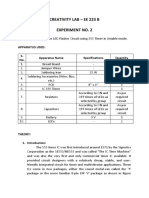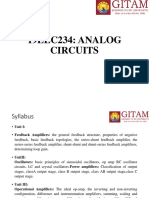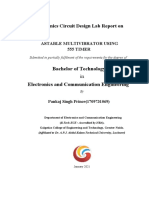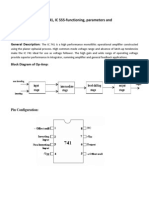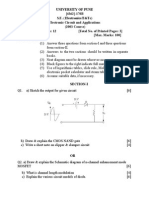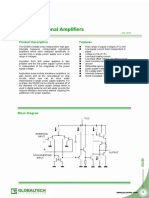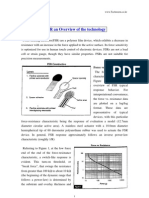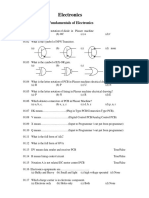0% found this document useful (0 votes)
19 views23 pagesCH 7 Asp
Chapter 7 discusses specialized integrated circuit applications, focusing on the 555 Timer IC, which can function as both a monostable and astable multivibrator for various timing applications. It also covers the design and advantages of a three op-amp instrumentation amplifier, highlighting its high input resistance and common-mode rejection ratio for accurate signal amplification. Additionally, the chapter introduces various special-purpose amplifiers, including logarithmic, isolation, chopper-stabilized, and programmable gain amplifiers, along with their applications in industrial and medical settings.
Uploaded by
iugajjar2006Copyright
© © All Rights Reserved
We take content rights seriously. If you suspect this is your content, claim it here.
Available Formats
Download as PDF, TXT or read online on Scribd
0% found this document useful (0 votes)
19 views23 pagesCH 7 Asp
Chapter 7 discusses specialized integrated circuit applications, focusing on the 555 Timer IC, which can function as both a monostable and astable multivibrator for various timing applications. It also covers the design and advantages of a three op-amp instrumentation amplifier, highlighting its high input resistance and common-mode rejection ratio for accurate signal amplification. Additionally, the chapter introduces various special-purpose amplifiers, including logarithmic, isolation, chopper-stabilized, and programmable gain amplifiers, along with their applications in industrial and medical settings.
Uploaded by
iugajjar2006Copyright
© © All Rights Reserved
We take content rights seriously. If you suspect this is your content, claim it here.
Available Formats
Download as PDF, TXT or read online on Scribd
/ 23





